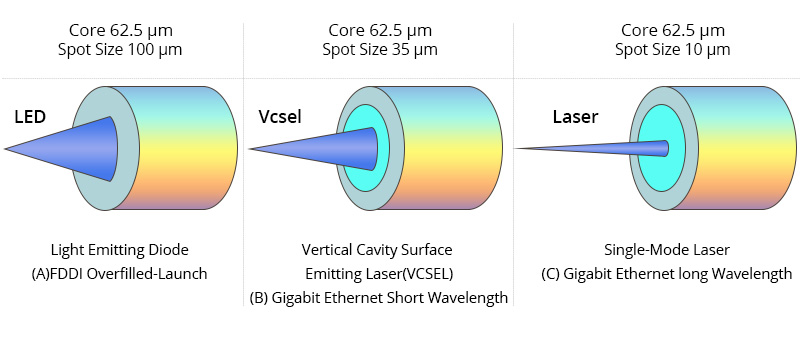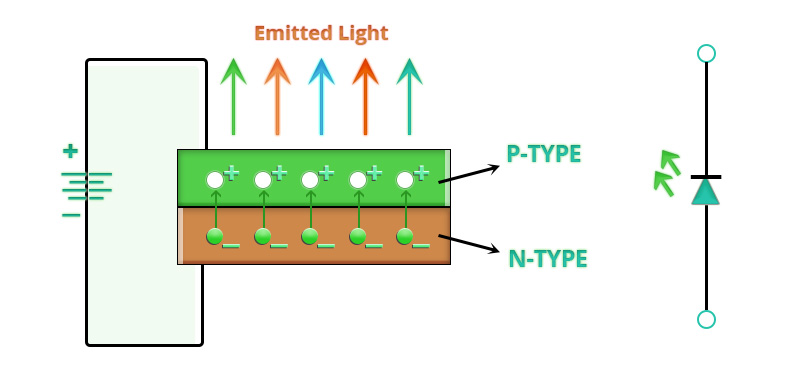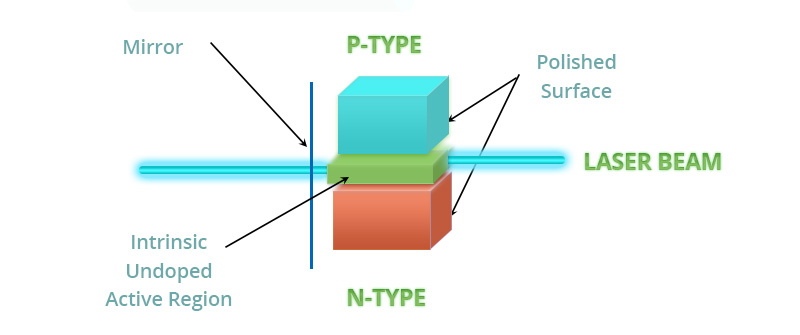Optical Light Source Wiki: Comprehensive Introduction of LED vs Laser Diode
We know that a whole basic optical fiber system is composed of a transmitter, optical fiber, and receiver in the optical fiber system. In most practical applications, the transmitter and receiver are integrated into a single device known as an optical transceiver module. This article will introduce essential optical components in the transmitter: optical fiber light sources, including halogen, LED, and laser.
The optical light source can be modulated through the driving circuit according to the signal to be transmitted. In the network test of optical fiber, the optical light source is also required to measure the optical fiber loss in the optical fiber link. Do you know the difference between Laser diode vs LED? In this article, we will introduce two types of semiconductor light sources: LED versus laser in detail.

Figure 1: LED vs. VCSEL vs. Laser
What is the Optical Light Source Working Principle?
The working principle of LED and laser optical light sources is to project the microscopic light beam into the optical fiber, the optical source can switch on and off millions or even billions of times in every second during the optical signals transmitting. Only when both light optical sources are switched precisely and fast can the optical signal be transmitted correctly.
What is an LED Optical Light Source?
LED can be used as an optical light source in many crucial fields. Its luminous principle is electro-luminance. This phenomenon means that when electrons and holes are recombined at the junction, the forward-biased P-N junction will emit a optical source.

Figure 2: LED working principle
Inside the fiber optic LED, a conduction band and a valence band are used. When the higher energy level electrons jump to the valence band which is in the production band contains holes, they will release energy, which can be light energy or heat energy.
The charges carriers recombination will produce an exothermic reaction or endothermic reaction. The exothermic reaction will occur when the high-level electrons mentioned above migrate to the low-level valence band and combine with holes. At the same time, the recombination will occur only when the energy of the two electrons to be recombing is similar.
Through the research of materials science, some semiconductors will release energy by emitting heating, including Germanium and Silicon, while some semiconductors will release energy by emitting light, mainly including GaAsP (Gallium Arsenide Phosphide) and GaP (Gallium Phosphide). Therefore, GaAsP and GaP are most suitable for making LED devices
The emergence of LED fiber optic light sources has brought numerous benefits, such as 0.1 microseconds fast response time, emitting visible narrow wavelength radiation, and high light conversion efficiency. These significant advantages make it an excellent optical light source device.
What is a Laser Optical Light Source?
The laser work principle is stimulated emission radiation. Therefore, people also called it stimulated radiation optical amplification. Stimulated emission is when photons collide with atoms, they produce similar photons

Figure 3: Laser Optical Light Source
When the electron is supplied with a lower level of electrical energy, the electron will migrate to the conduction band from the valence band and absorb the extra energy provided to it at the same time, which is called absorption.

Figure 4: Laser Working Principle
When the electron is at a higher level, the electron will become unstable. To make it stable, it will emit some energy, possibly light energy or heat energy. When it emits light energy, it will emit in the form of photons. We call this process as spontaneous emission.
Then what is the stimulated emission? When the photons impact electrons, these electrons are endowed with high energy due to the impact of photons carrying more energy, making the electron unstable. Meanwhile, the electron will move to a lower energy state and emit another photon together with the incident photon. We called this process stimulated emission.
The process of stimulated emission is all occurs in the Laser diode, and the photons similar to incident photons converge and emit to a light beam. These emitted photons will release more photons which is similar to incident photons, so the light beams generated by laser optical light source are coherent and monochromatic.
What is the Difference Between LED and Laser
The key difference between LED and laser is the light beam color, the LED can be of various colors, and the laser can only be a single color light beam. Their work principle of LED is electro-luminance and the working principle of laser is that of stimulated emission. In addition to these, LED represents the standard light source, short for light-emitting diodes, while laser light source is generally used in special situations. Laser light source has faster operation speed, less optical transmission loss, and lower BER(bit error ratio). These are the benefits of laser light sources, and their price is more expensive than the LED optic light sources.
What is VCSEL?
VCSEL stands for vertical-cavity surface-emitting laser, it composes of two oppositely-doped Distributed Bragg Reflectors(DBR) with a cavity layer, VCSEL laser has become a popular high-speed network laser source in the market. The advantages of low cost and high bandwidth make it an ideal solution for a gigabit optical fiber network. In addition to its application in optical fiber light sources, it is also used in analog broadband signal transmission, absorption spectroscopy (TDLAS), laser printers.
Conclusion
This post introduces two optical light source types — Laser diode vs LED, and focuses on the working principle of each. One thing to note is the wavelength emitted by both LED and Laser is in a continuous range rather than a single wavelength. QSFPTEK offers accessories used with optical sources, like fiber optic transceivers. Learn more about QSFPTEK products with customer service via [email protected].










